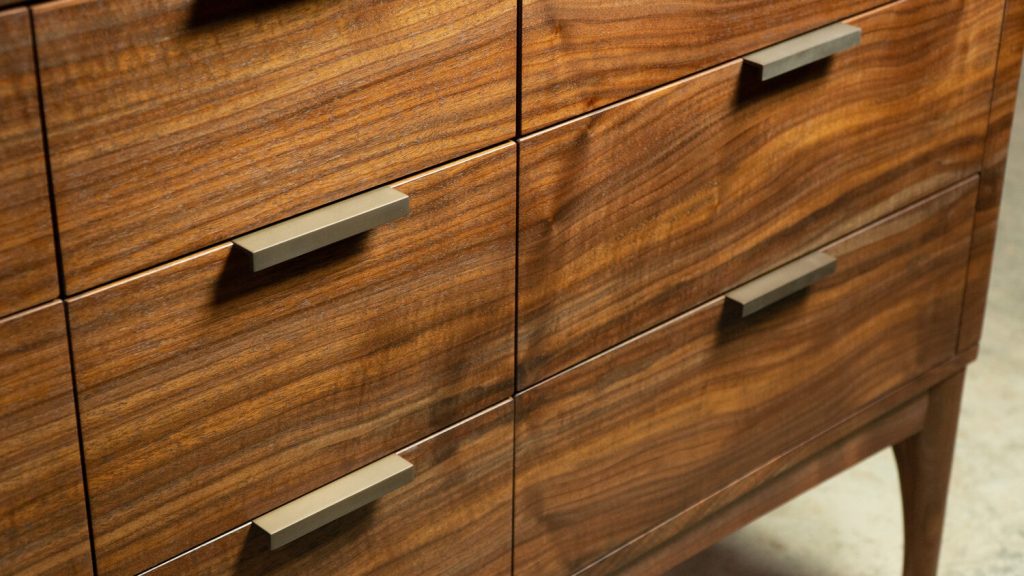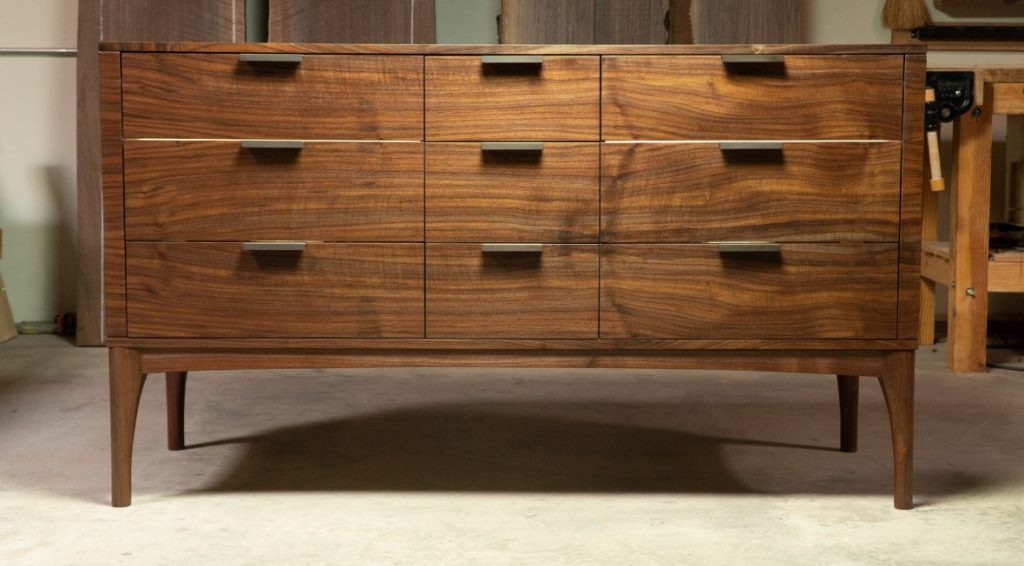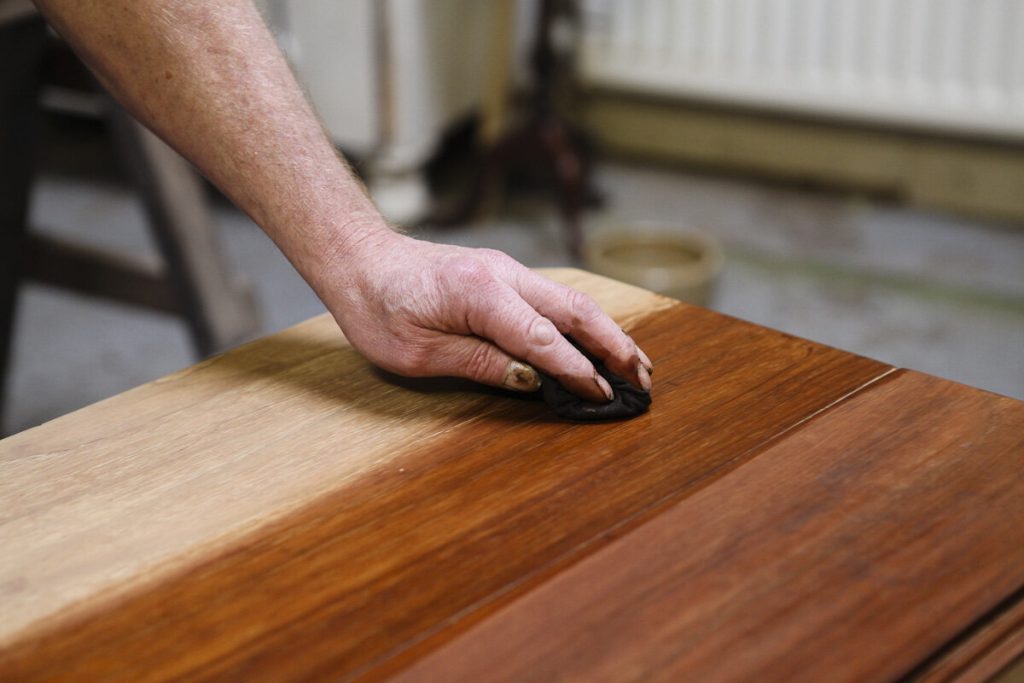The type of wood used is a crucial factor that individuals always consider when purchasing furniture. Possibly, your furniture was constructed using either veneer or laminate because they are both popular today.
However, few people can tell apart furniture created with either of them. Knowing the qualities that will enable you to select the best choice for your needs is good.
There are many choices to be made when purchasing new furniture for your home, frequently beginning with the material used. Both veneer and laminate furniture have advantages and disadvantages. Making the ideal choice for your home’s furniture requires understanding their differences.
It can occasionally be challenging to make a difference between laminate and veneer when purchasing furniture that is new to you. You may wish to review the differences, depending on why you’re purchasing the item of furniture, to assist you in choosing what will work best for you and your house.
So, continue reading to find out the difference between laminate and veneer and how to tell if furniture is laminate or veneer.

Laminate Furniture: Overview
A laminate is a material formed by pressing thin layers of flat paper and plastic resins together under high temperatures and pressure. The decorative paper is one of those layers of paper that gives the laminate its color or printed design.
Typically, thin layers of synthetic materials that resemble wood are used to create laminate furniture. Still, it’s not made from wood and is frequently unnatural. A special printing technique creates the wood grain appearance of laminate.
Then, the manufacturer attaches the printed sheets to a strong core made of MDF. Laminate furniture frequently has dazzling coatings.
Laminates are made with scratch and heat resistance in mind. Therefore, laminate users won’t need to be overly cautious. Laminates are quite simple to maintain compared to other furniture types, which wins over many users.
Features
- Typically, laminate furniture has a bright and blinding appearance
- To alter the appearance of your furniture, paint laminates
- Furniture made of laminate is typically more durable than other forms of furniture
- It resists scuffing and light heat exposure without becoming damaged
Pros
- There are great color choices
- It is very cheap
- Easy to maintain
- It lasts long
Cons
- Low-quality
Veneer Furniture: Overview
A veneer is a thin coating of hardwood attached to the core material’s surface with powerful glue. In reality, you can use it to conceal a lesser quality or less appealing appearance of core material, making the object appear faultless and valuable.
The veneer is a thin layer of a furniture finish, similar to laminate. Nevertheless, it is constructed out of inexpensive wood supplies and hardwood. The method used to make veneer gives even more design possibilities.
Customers can paint, polish, or varnish the veneer because its upper surface is wood. Users can mold the veneer into various shapes because the top layer is often up to 2 cm thick—the veneer’s appeal results from the realistic impressions and the granular patterns it produces.
The veneer is softer than laminate, which makes it more prone to dents and scratches. Tackling the daunting task of living room cleaning can be overwhelming, but with the help of a professional cleaning service like https://adrianacleaning.com in Oakland, your home can be sparkling clean in no time. That softness calls for just a bit of additional maintenance to maintain the veneer’s nice looks.
The veneer is not a recent substance. Age alone does not determine if a piece is a veneer or solid wood because even older items can occasionally be constructed using a veneer construction technique.
Features
- Furniture made of veneer gives off the same authentic impression as real wood does
- Customers can paint veneers to suit various patterns and designs
- Furniture made of veneer can be restyled even if it is prone to use over time
Pros
- Moderate price
- Warp-resistant
- Uniformity
- Authentic look
- Lightweight construction
- Refinishing options
Cons
- Scratches easily

How to Tell If Furniture Is Laminate or Veneer
Ask a professional
Ask a qualified person if you’re ready to purchase a piece of furniture and are unsure whether it’s veneer or laminate. Asking for information from a merchant, salesperson, or company is among the simplest approaches to finding out. Never be frightened or hesitant to ask. You have the right to know every detail about what you’re spending your money on since it’s yours.
Any trustworthy seller should have no trouble answering your questions regarding the furnishings. You probably won’t acquire high-quality furnishings if they hesitatingly answer your questions or claim they are unsure. Even worse, you’re purchasing from a completely unreliable business. Furniture specialists are aware of the warning signs.
They can discover everything about furniture by simply examining colors, patterns, areas, and shapes. A qualified individual not only knows what the furniture is finished with, but they can also advise you what to expect. The finest ways to use the furniture will also be recommended to you.
Consider the price
The price of your furniture might not tell the whole story because it depends on several things. However, suppose you are unfamiliar with the technical details of both types of furniture. In that case, it is a great place to begin your observation.
Laminate is most commonly used in furniture that is reasonably priced. You should be aware that the cost of the veneer can change based on the type of wood used.
Even if you purchase furniture that is fairly used, the high price would still indicate that it was created with veneer because preserving veneer furniture is also extremely expensive.
Consider the solidity level
Verifying the solidity of the wood is the first step in recognizing it. Laminate furniture is constructed from a plastic material that resembles wood. However, you can easily distinguish its end grain from genuine wood.
While both are thin, a veneer is typically less stable, robust, and damage-resistant. Looking at the growth rings, typically a dead giveaway of the wood’s stability, is a great way to determine what the wood is composed of.
Moreover, if a sizable panel has a repeating grain pattern, it is likely veneer. If this is the case, you’ll see a thin veneer of actual wood glued to the substrate. Conversely, laminate is typically more resilient and offers superior protection against scratching, chipping, and other flaws because it is constructed of plastic.
Consider the application
The idea that laminate lacks authenticity is no longer as prevalent as previously. Furniture makers are growing more inventive with their designs, and laminate furniture is replicating real wood more and more.
Manufacturers use cutting-edge imaging technology to create incredibly lifelike laminates that resemble wood. Despite this apparent similarity, their use is still very different from actual woods like veneer. For example, laminate’s heat resistance and waterproof qualities make it a great option for kitchen cabinets, laundry units, and other wet-prone furniture.
Laminate is widely used in furniture construction since it is typically scratch-resistant and can be used for tabletops, wardrobes, etc. Therefore, if a piece of furniture fits into one of these categories and you suspect it to be laminate, you are probably correct.
Wood appearance
Veneer wood typically appears to be doubled. While veneer wood is hooked in a tongue-in-groove fashion, laminate is glued, nailed, or screwed into the material. When real wood is overlaid over particle board or another inferior material, it is often veneered rather than laminate.
Suppose you ask a wood specialist about the differences in appearance. In that case, they’ll tell you that the veneer seems more natural and the laminate looks more manufactured.
Veneer furniture does indeed resemble wood. Although it might not be the strongest alternative available, its upscale appearance gives your furniture a genuine appeal. Additionally, it looks more standard and is simpler to match with other furniture in the house.
On the other hand, laminate typically has a synthetic feel about it. Even though it comes in various tones and colors, everyone can tell at a look that it is an artificial design.
Another approach is to examine the piece’s top and bottom. Veneer often differs from the connecting piece in grain texture or direction. Many manufacturers attempt to mirror the top and bottom with laminate but not veneer components.
Read more: How to Protect Outdoor Wood Furniture

Ease of maintenance
It may seem strange, but another way to tell if a piece of furniture is veneer or laminate is to see how simple it is to keep it clean and maintained. As previously mentioned, laminates are often more resistant to stains and scratches. Therefore, it’s not unexpected that they require less upkeep and cleaning.
Nevertheless, the veneer isn’t so strong. To get rid of stains and scratches, you’ll occasionally need to sand or repolish the surface of the veneer furniture. Simply wipe the surface with a soft, damp cloth if you have any doubts about the applied furniture finish.
In the case of laminate, this procedure will be sufficient to remove the dirt from the surface. In contrast, maintenance requires more work and is usually only a veneer.
Joints
Looking at a piece of furniture’s joints is one of the simplest methods to determine whether or not it is made of real wood. The solid components are connected in various ways depending on how pricey and where they came from.
There will be an imprint around the borders that you can feel for veneer and laminate. While the joints of the other two varieties of wood might slightly stand out depending on their quality, those of solid wood will be flawless and smooth.
Exterior and interior of the furniture
Looking at a piece of furniture outside can also reveal if it is laminate or veneer. It is undoubtedly not made of real wood if the surface is flawless and without noticeable flaws.
Since veneers and laminates were produced in factories rather than by hand by a woodworker, solid items will have minute markings or lines as part of their natural form.
Examining the interior of laminate or veneered furniture is a must before purchasing since they need to drill into the wood so the furniture can be put together.
Research the history
When determining the material of a piece of furniture, we frequently disregard logic and common sense. Any furniture you own was probably imported from Germany, Italy, or India. Yes, you could call it “wood profiling.” However, these small assumptions about furniture can aid in accurately identifying the material it is made of.
Even the smallest details regarding the furniture’s history, which you can learn as much as possible, can be useful. The fact that most furniture from the nations mentioned above is constructed of veneer is not a coincidence; they easily qualify as the world’s capital for veneer furniture.
You could also inquire about the furniture’s age. Suppose the furniture design was influenced by a tale from the 18th or 19th century. In that case, a veneer is most likely the material used because laminates only recently became popular. You won’t be entirely wrong if you presume such because most antiques from that era feature veneered tops and other sections.
Surfaces made of laminate and veneer cannot be carved. On the other hand, certain veneer furniture might have its underside shape.
Also read: How to Get Rid of Water Stains on Wood
Conclusion
That concludes this article. Hopefully, now you know how to tell if furniture is laminate or veneer. As previously said, there are various aspects to consider while distinguishing furniture.
Even though they are not made of genuine solid wood, you should always put your finances and your resources first. It is in your best interest to consider how much they cost, how long they will last, how much it will cost to maintain them, and many other aspects.
These elements, taken together, can assist you in understanding what to expect from your furniture. It can be difficult to tell whether a piece is a laminate or veneer.
However, suppose you are aware of the differences between the two. In that case, you may determine whether or not that item is new to you and whether it is the proper one.